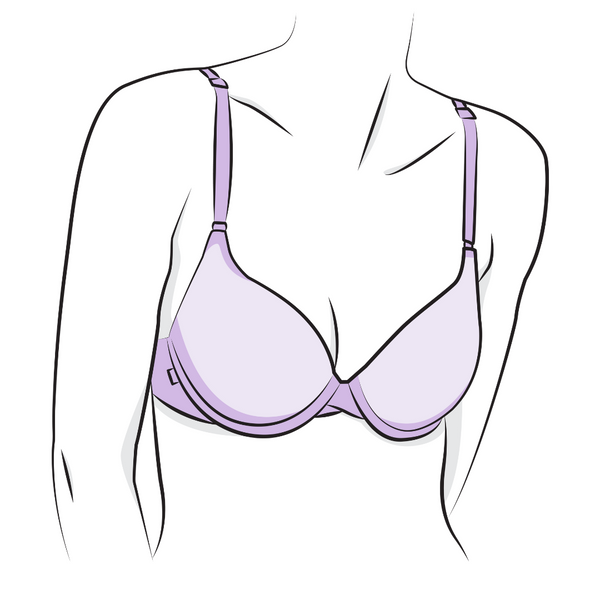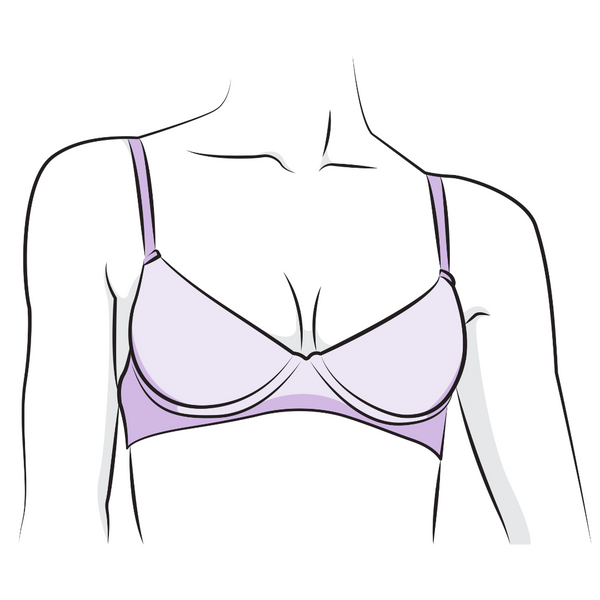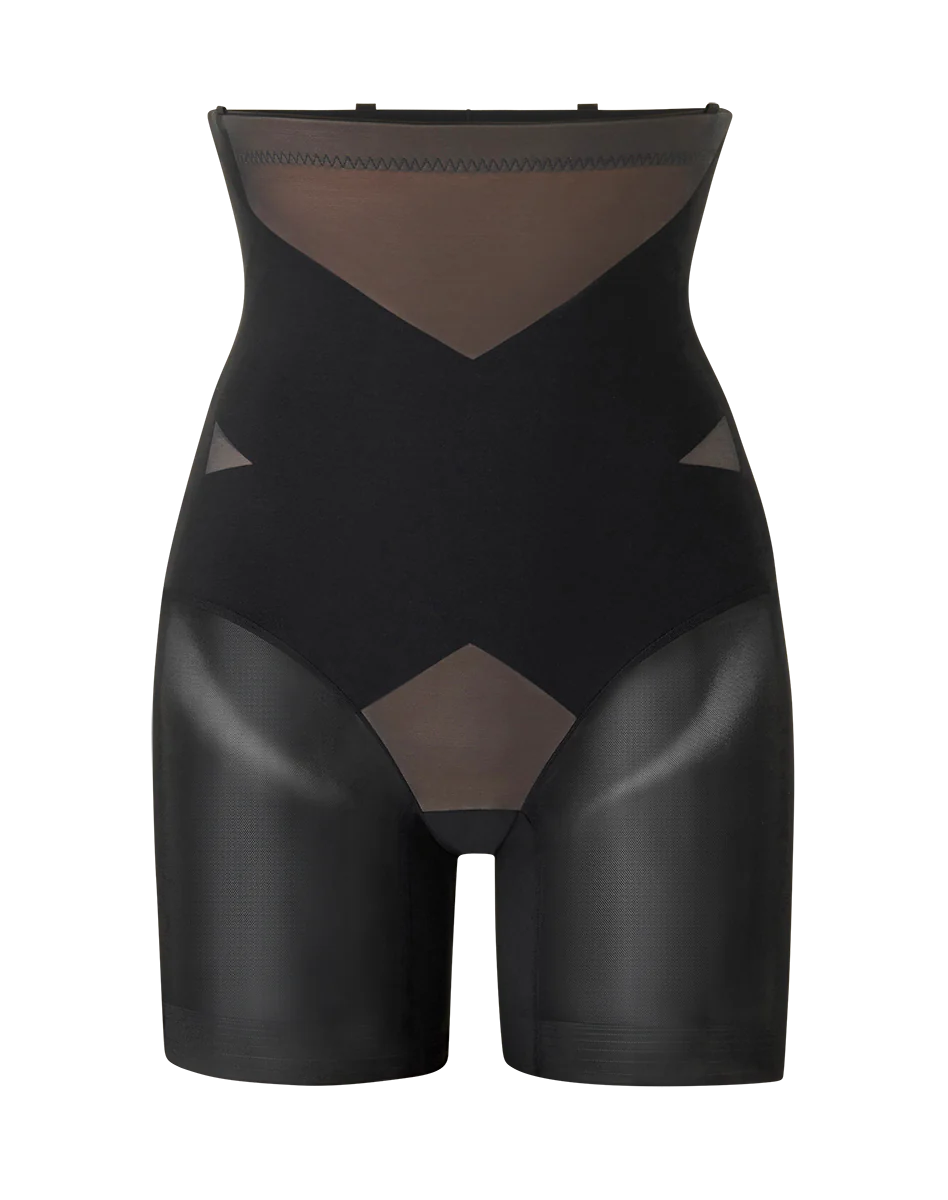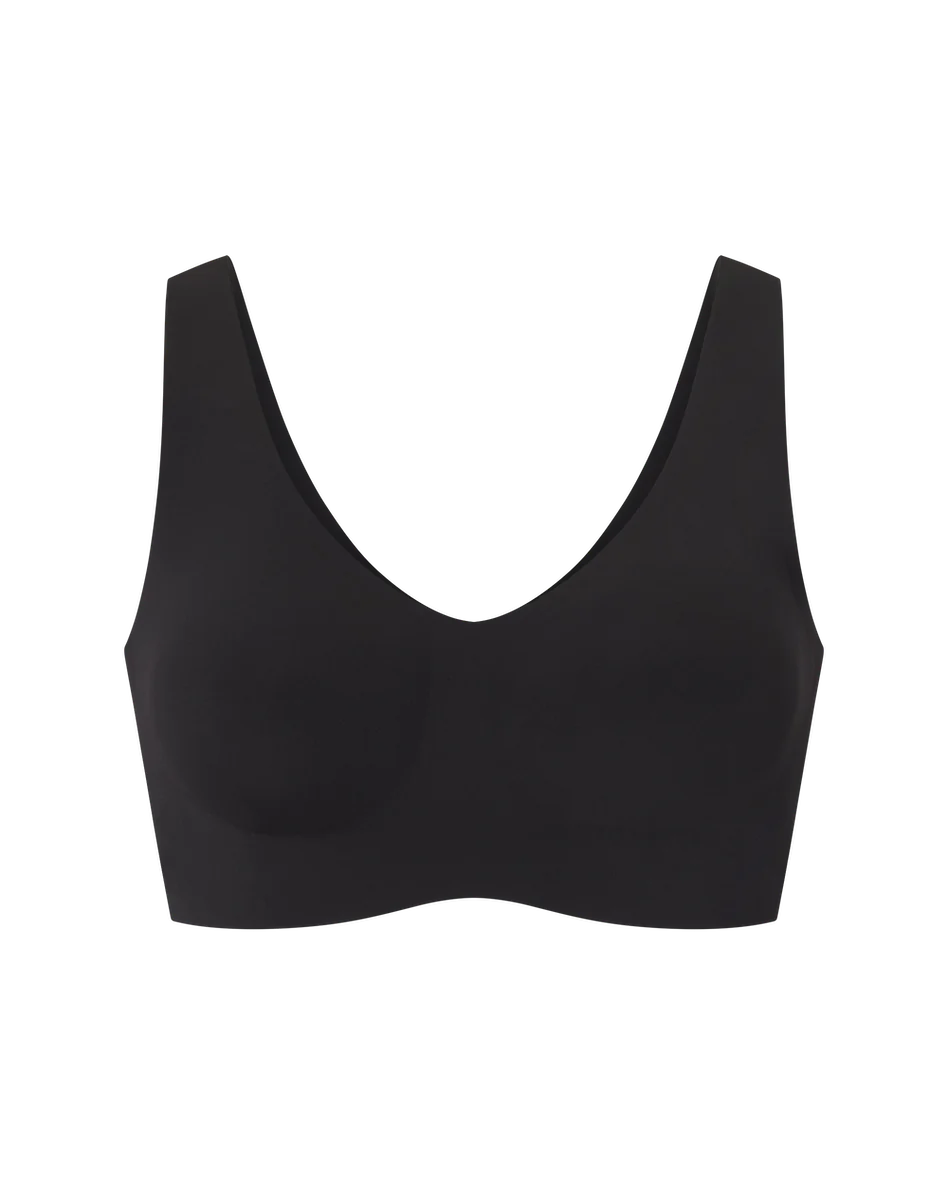The Ultimate Underwire Bra Guide
September 20, 2024
by Sophie Weiss

Ah, the underwire. It's a classic style that has been around for decades because, when it comes to support, it’s one of the best bra solutions out there. While it has a very solid fan base, it also has a lot of detractors who feel wronged by poking wires. However, underwire has had a ton of innovation in recent years, and the experience can actually be a great one.
First we'll cover who an underwire bra is good for, and then we’ll dive into the different underwire styles you can try to get the most comfortable wear experience possible. We promise by the end, you'll fall in love again with underwire!
What is underwire?
Though ubiquitous in today’s bra styles, the first US patent for underwire bras wasn't filed until 1893, meaning the underwire bras we know and love are a fairly new invention, all things considered. The purpose of an underwire is to provide support. Larger chested women benefit most from underwire because it provides more structure and helps alleviate the weight of the breasts. East-West breast shapes can also be helped by underwire bras because the combination of cups and wires prevents drifting.
How underwires avoid poke through
One of the primary grievances with underwire is that they can poke through the bra and hurt your skin. As the bra wearer moves, it creates opportunities for wire to move around and poke through. To avoid this, bra manufacturers will cover the ends of the wires with different materials, like silicone. Some brands will also shorten the length of the underwire to give a bit more leeway and add a bit more of a cushioned underwire casing so it’s stronger, more comfortable, and less easily punctured by the wire.
Types of underwires
Traditional underwires are made of a metal wire, but there are many options when it comes to sourcing underwires.
Metal underwire
When it comes to underwire complaints, metal wires get the worst rap. When constructed poorly, it can result in poking, stiffness, and digging. However, when properly gauged (meaning, the underwire is the correct width for the amount of weight it’s supporting) and thoughtfully constructed, this type of wire can be extremely comfortable and effective.
Flexiwire underwire
This type of wire is more flexible with your body. It’s still made of metal, but it’s a different gauge that allows for more pliability. Flexiwire is typically used for smaller breast sizes. You can use it in larger cup sizes as well, but if wire is too flexible, it can cause your breasts to appear East West.
Plastic
Plastic underwire is more supportive than gel underwire, but less supportive than metal. It’s higher in flexibility than traditional underwire and won’t poke through bra fabric.
Gel
Gel underwire is made of thickly applied silicone glue. While it can provide some structure, it’s not particularly effective if you’re really seeking support and separation. This can be an amazing option if you’re looking for comfort, but it’s the least supportive type of underwire.
Types of underwire construction
Metal underwires can be incredibly comfortable and effective, and a large part of that has to do with the way the bras are constructed.
Traditional underwire
Traditional underwire construction means wires are sewn into a channel on the interior of the cup.
Embedded underwire
Underwires can also be embedded into the foam pad. This means the wires are less likely to poke you, and there’s more cushioning between the wire and your skin so the bra sits more comfortably against your body.
Wire on the outside
In this construction, the underwires are placed in the same spot as traditional underwire, but they’re sitting on the lip of the cup exterior. The benefit to this construction style is that it’s further away from your body, which protects against poking and can have an overall more comfortable feel.
Bonding
You can bond, or glue, plastic underwire between two different fabrics.
Different underwire shapes
Underwire also comes in different shapes, which can impact the comfort and fit of your bra.
Traditional underwire
Traditional underwire construction features a single piece of wire per cup. This helps to create separation between breasts a lot more easily than monowire.
Monowire underwire
Monowire construction means one piece of wire connects between the two cups. One reason you might opt for monowire is because it allows you to get more of a plunge bra shape without losing support in the bra center.
Underwire bra styles
Almost every bra style, except for a bralette, can feature an underwire. The most popular underwire bra styles are t-shirt bras, demi bras, and push-up bras.
T-Shirt Bra
T-shirt bras are meant to disappear underneath your clothing. They’re designed to be seamless and feature smooth, molded cups that give breasts a natural, rounded shape.

Demi Bra
Demi means half, and that’s exactly what a demi-cup bra does: offer half as much cup coverage as a full-cup bra. While demi bras do offer substantial support, they reveal more cleavage than a full-coverage alternative.

Push-up Bra
Push-up bras push breasts together to create additional cleavage. The push-up effect is typically caused by angled padding placed within each bra cup. Usually, a push-up bra will have a demi-cup to help reveal part of the breast and underwire for additional lift and support.

Why should you choose an underwire bra?
You have a large chest that needs heavy support.
While many wire-free bras can pretty closely match the support level of an underwire bra, for women with very large breasts whose priority is support, a sturdy metal underwire is the best option.
Your breasts are causing back pain.
Heavy duty sports bras with a large surface area might be the most supportive and comfortable option for back pain, but they simply don’t work with many outfits. Plus, sports bras will compress the shape and size of your breasts. If you want something that works with lower cut tops that maintains your silhouette, a heavy metal underwire bra is a great option to give you enough support to hopefully alleviate your pain.
You have a relaxed breast shape.
For breast shapes that need more lift than others, an underwire is a great choice to help lift, shape, and separate your breasts. For help determining what shape your breasts are, check out our post here.
When is underwire not the best choice?
You hate the feeling of underwire.
While there are certainly a lot of methods to make underwire more comfortable — many of which we just discussed — there will always be people who don’t like the feeling of sturdy wire. Luckily, there are many wire-free options that are just as supportive as their underwire alternatives. Check out our post about wireless bras here.
You don’t need much support.
While underwire can be great for separation and lift, if you have naturally perky or small breasts that don’t need the support of an underwire, you may be happier with wire-free alternatives like bralettes.
Your priority is comfort.
If you’re looking for a bra that’s so comfortable you’ll forget you’re wearing it, wire-free is pretty much the gold standard. Soft, compressive fabric is pretty much always going to feel better against your skin than metal, even when that wiring is embedded within foam or fabric.
If you want to know which underwire bra is right for you, check out our essential bra style guide.
Sophie Weiss
Sophie Weiss is a writer and bra expert based in Los Angeles.





























